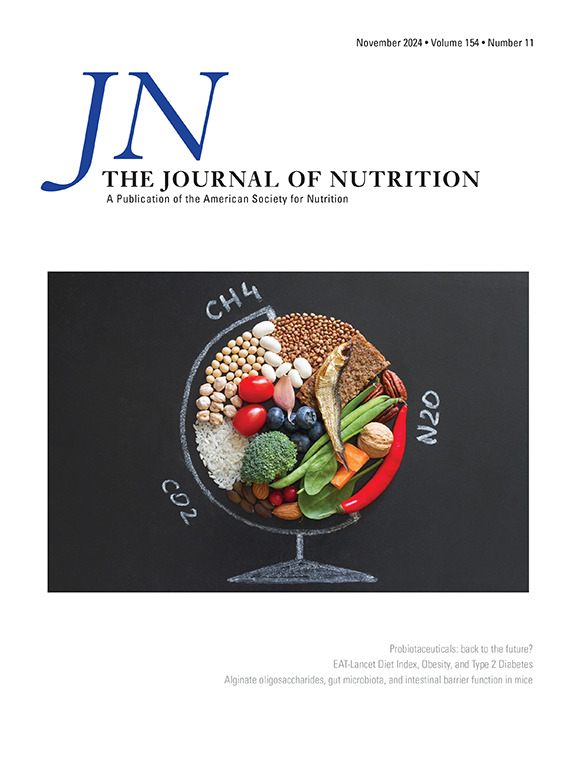评估人体体内肌肉蛋白质合成率:氘化水 (2H2O) 法。
IF 3.8
3区 医学
Q2 NUTRITION & DIETETICS
引用次数: 0
摘要
骨骼肌组织处于不断更替的状态,人体肌肉组织蛋白质的合成和分解率在一天中介于 1-2% 之间。肌肉组织的重塑在很大程度上受肌肉组织蛋白质合成率上调和下调的控制。研究通常采用稳定同位素标记氨基酸来评估人体内的肌肉蛋白质合成率。在实验室环境中施用标记氨基酸后,会在数小时内采集肌肉组织样本,以评估这些标记氨基酸在肌肉组织蛋白质中的结合率。为了对肌肉蛋白质的合成率进行更长时间的量化,使用氘化水的方法重新引起了人们的兴趣。每天摄入氧化氘(2H2O)会使体内水池富含 2H。可获得的 2H 原子主要通过肝脏中丙酮酸的转氨作用与内源性合成的丙氨酸结合。由于所有组织都能广泛获得 2H-丙氨酸,因此 2H-丙氨酸会被纳入新合成的组织蛋白质中。通过评估肌肉活检样本中组织蛋白结合的 2H-丙氨酸富集度随时间推移而增加的情况,可以计算出几天甚至几周的肌肉蛋白质合成率。由于氘化水法可用于评估非实验室环境下自由生活条件下的肌肉组织蛋白质合成率,因此人们对其应用的兴趣与日俱增。本手稿介绍了氘化水法的理论背景,并提供了正确应用该方法测定人体体内肌肉蛋白质合成率的综合教程。本文章由计算机程序翻译,如有差异,请以英文原文为准。
Assessing Muscle Protein Synthesis Rates In Vivo in Humans: The Deuterated Water (2H2O) Method
Skeletal muscle tissue is in a constant state of turnover, with muscle tissue protein synthesis and breakdown rates ranging between 1% and 2% across the day in vivo in humans. Muscle tissue remodeling is largely controlled by the up- and down-regulation of muscle tissue protein synthesis rates. Research studies generally apply stable isotope-labeled amino acids to assess muscle protein synthesis rates in vivo in humans. Following labeled amino acid administration in a laboratory setting, muscle tissue samples are collected over several hours to assess the incorporation rate of these labeled amino acids in muscle tissue protein. To allow quantification of bulk muscle protein synthesis rates over more prolonged periods, the use of deuterated water methodology has regained much interest. Ingestion of daily boluses of deuterium oxide results in 2H enrichment of the body water pool. The available 2H-atoms become incorporated into endogenously synthesized alanine primarily through transamination of pyruvate in the liver. With 2H-alanine widely available to all tissues, it becomes incorporated into de novo synthesized tissue proteins. Assessing the increase in tissue protein-bound 2H-alanine enrichment in muscle biopsy samples over time allows for the calculation of muscle protein synthesis rates over several days or even weeks. As the deuterated water method allows for the assessment of muscle tissue protein synthesis rates under free-living conditions in nonlaboratory settings, there is an increasing interest in its application. This manuscript describes the theoretical background of the deuterated water method and offers a comprehensive tutorial to correctly apply the method to determine bulk muscle protein synthesis rates in vivo in humans.
求助全文
通过发布文献求助,成功后即可免费获取论文全文。
去求助
来源期刊

Journal of Nutrition
医学-营养学
CiteScore
7.60
自引率
4.80%
发文量
260
审稿时长
39 days
期刊介绍:
The Journal of Nutrition (JN/J Nutr) publishes peer-reviewed original research papers covering all aspects of experimental nutrition in humans and other animal species; special articles such as reviews and biographies of prominent nutrition scientists; and issues, opinions, and commentaries on controversial issues in nutrition. Supplements are frequently published to provide extended discussion of topics of special interest.
 求助内容:
求助内容: 应助结果提醒方式:
应助结果提醒方式:


